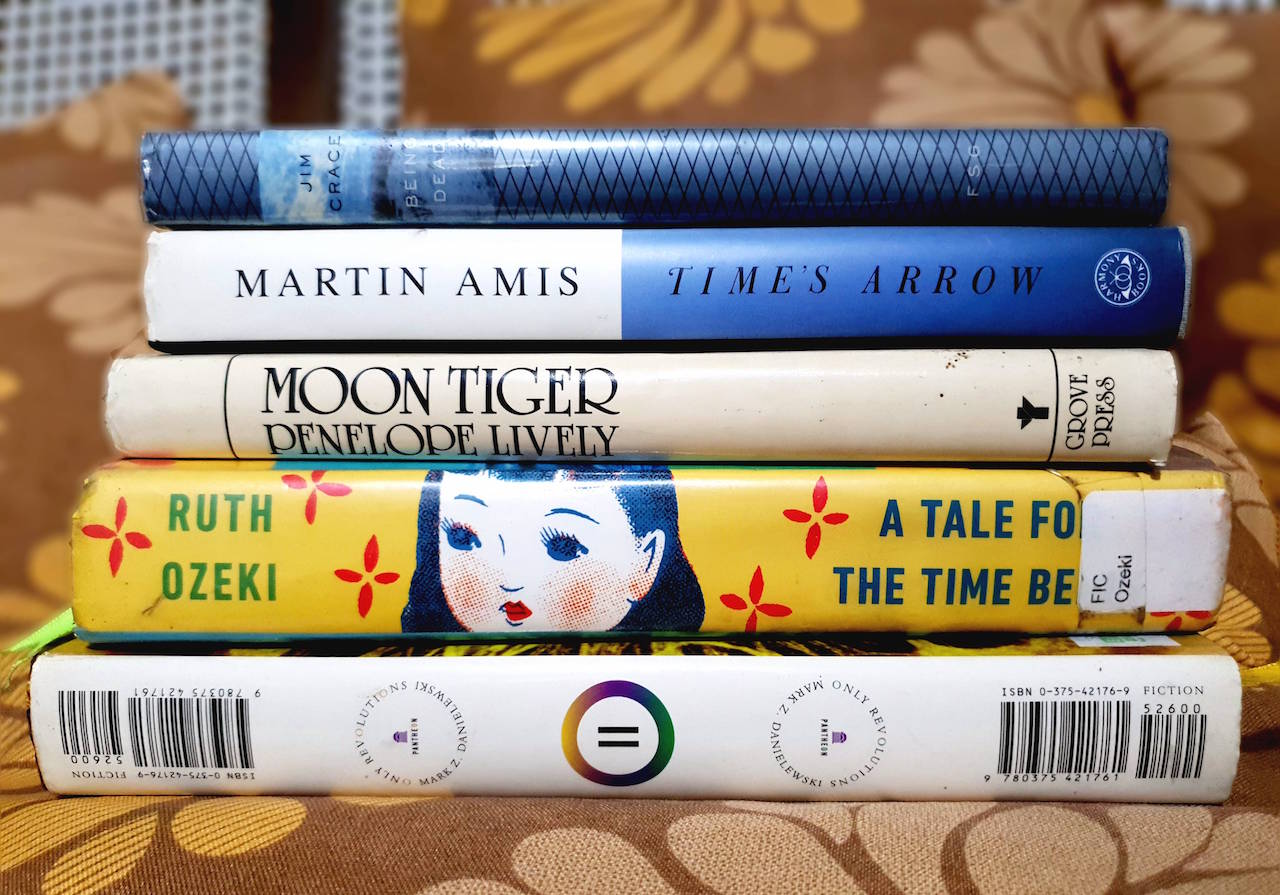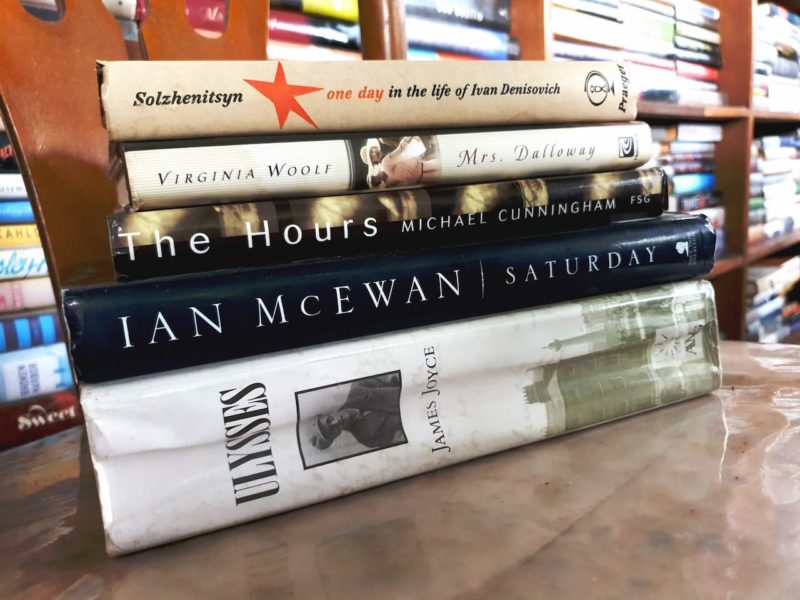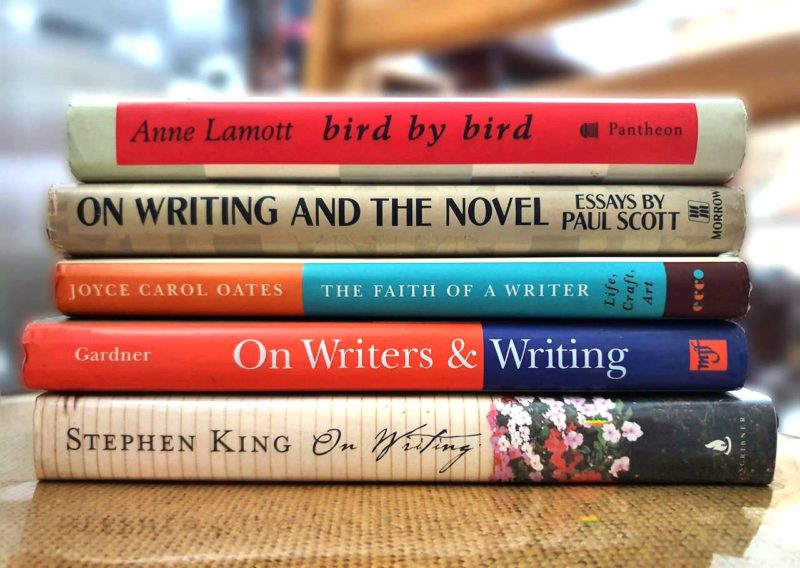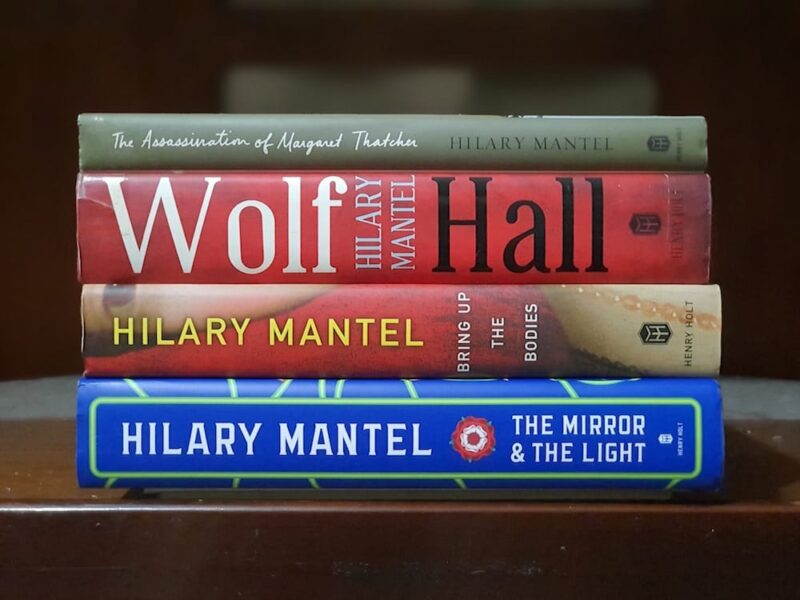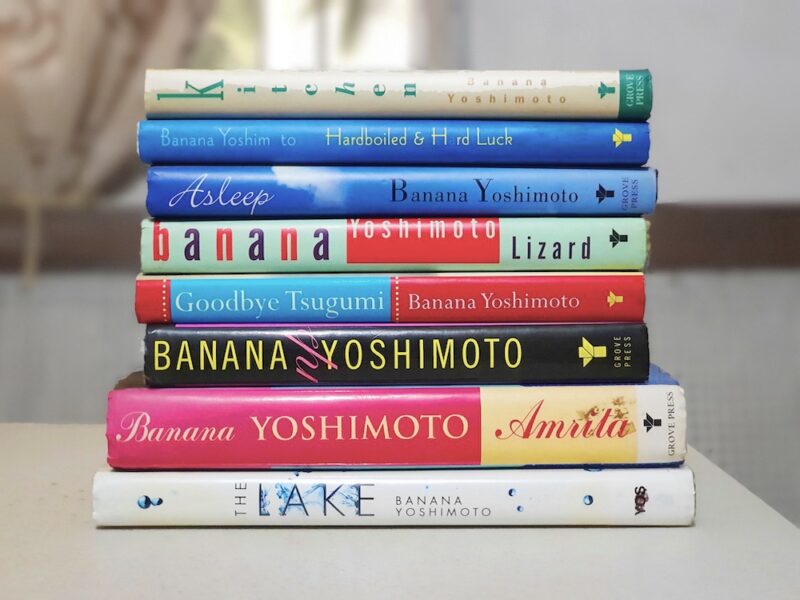Being Dead (1999) by Jim Crace
The novel Being Dead is about two lovers, Joseph and Celice, who are murdered by an unknown thief during their trip to the dunes at the beach, the place where they initially met. The narration of the novel is in reverse chronological order—moving from the end of the protagonists life together, to their separate lives before they met as a couple. The novel is being told in three distinct threads that play with time, with each timeline being told in reverse.
The story then tells how the couple first met as students at the university, and how they fell in love. They are both married to other people, but for many years they have been meeting secretly, spending their days at the beach together, creating a wonderfully fulfilling friendship. The backward narrative not only works as exposition to their lives prior to murder, it also shows their dramatic interactions with other characters in the book, particularly with their daughter, Syl.
Time’s Arrow (1991) by Martin Amis
The book is an exploration of the idea of time, that it only moves in one direction. In Time’s Arrow, the author, Martin Amis, imagines a world where the direction of time is reversed. In this world, events that have already occurred are yet to happen, and events that have yet to happen have already occurred. The author examines this idea through the question of whether or not time is reversible.
The reader sees the end of the story first and then goes back to the beginning. This play with time is used to evoke a sense of hopelessness in the reader, as it can be difficult to know what will happen in the future when events that should be well known to the reader are still unknown. The story begins towards the end of the main character’s existence, narrated by a “secondary consciousness,” probably of the main character himself. It then moves backwards to explore the events that led up to his birth.
Moon Tiger (1987) by Penelope Lively
Moon Tiger is written in a non-linear fashion, jumping back and forth through time. The events are primarily told in chronological order, with some time jumps. The novel is set in the 1960s, primarily between the end of World War II, when the protagonist’s husband was killed, and 1977.
Penelope Lively employs various techniques in writing her novel, one of which is the use of time. The time period of the novel is not clear, but it is most likely set in the 1970s or 1980s. There are also some flashbacks to World War II. The narrative chronology is also unclear. The play with time is purposely not kept linear and Lively jumps back and forth through time so that the reader is never sure of where they are in the timeline of the story.
A Tale For The Time Being (2013) by Ruth Ozeki
The book is about a Japanese girl, Nao, who creates a diary to write about her life. Her diary is found floating in the Pacific Ocean and is picked up by a Japanese novelist and Zen Buddhist Priest, Ruth Ozeki. This a metaphysical novel wherein the author is also one of the main characters who is a novelist writing a novel. Through Nao’s diary, Ruth learns about the everyday life of Nao, her family and friends and how World War II still effects Japan today.
The novel is narrated by two characters and is set both in Japan and Canada. Aside from the dual narratives, the story features a book within the book written by the author Ruth, and a commentary on the novel by academic characters. These differing perspectives help to show how subjective time is and how it impacts our decisions and stories. Both narratives also use techniques that play with time such as flashbacks and flash-forwards.
Only Revolutions (2006) by Mark Z. Danielewski
Mark Z. Danielewski’s novel, Only Revolutions, utilizes literary techniques that play with time, with narrative chronology jumping between past and future to tell the story of two characters, Sam and Hailey, who are living their lives in reverse. The novel starts at the end of the story and jumps around the timeline to show the overlapping of their lives. The novel is set in an unspecified time (perhaps an infinite time) when the earth has stopped revolving around its axis. The earth becomes a giant pinball, the sun rises in the west and sets in the east.
Only Revolutions is a text that consists of two parts that are constantly rotating. The first part is written in prose, while the second part is written in poetry. The book tells Sam and Hailey’s story as constantly being moved by the “earth’s revolutions,” because they are living in two different hemispheres, one in America and one in Australia. They are constantly looking for one another to find and share an everlasting and pure love that they hope will last throughout time.
Further Reading
Time in Literature, exactlywhatistime.com
Time as a Literary Device: Flashbacks vs. Non-Linear Structure by Kristen Lamb, authorkristenlamb.com
